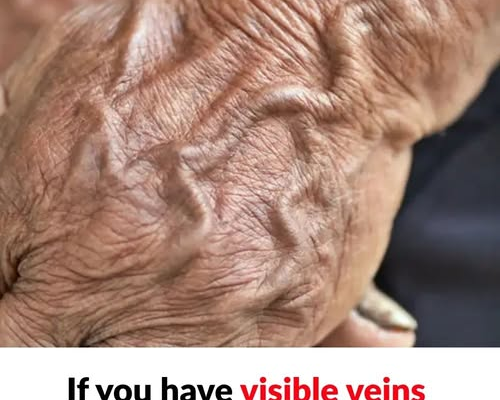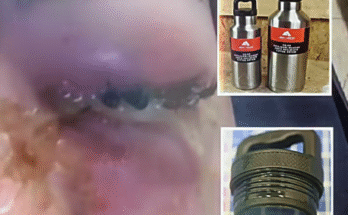As we grow older, our bodies undergo many subtle changes, some of which catch us by surprise. One common yet often overlooked change is the increasing visibility of veins, particularly on the hands, arms, legs, and chest. For many people, seeing these veins stand out more clearly can be unsettling or even cause alarm. However, in most cases, this change is a completely natural part of the aging process rather than an indication of a serious health problem.
One of the main reasons veins become more prominent with age is the gradual thinning of the skin. As we age, our bodies produce less collagen and elastin — two key proteins responsible for maintaining skin’s firmness, elasticity, and overall youthful appearance. Without sufficient collagen and elastin, the skin becomes thinner, more fragile, and less able to conceal what lies beneath it, including blood vessels.

Additionally, the layer of subcutaneous fat just beneath the skin starts to diminish over time. This fat layer acts as a cushion and barrier that hides veins and other structures from view. As it decreases, veins that were once hidden now become more obvious, creating a more translucent or “veiny” look, especially in areas like the hands and forearms where the skin is naturally thinner.
It’s not only the skin that changes — veins themselves undergo structural transformations with age. The walls and valves inside veins can weaken over time, making them less efficient at moving blood back toward the heart. This inefficiency can cause blood to pool, leading veins to swell and bulge outward. This process often results in varicose veins, which are enlarged, twisted veins that are commonly seen in the legs. Varicose veins are particularly common among older adults who spend long periods standing or sitting, as prolonged immobility can increase pressure in the veins.
Circulation changes also play a role. As we age, our overall blood circulation tends to slow down, partly because of decreased physical activity and hormonal changes. Reduced activity means the calf muscles, which help pump blood from the legs back to the heart, don’t work as effectively. Poorer circulation can make veins appear darker and more pronounced.
Genetics and lifestyle choices significantly influence how noticeable veins become as we age. If your family members have prominent veins, you may be more likely to develop them too. Lifestyle habits, such as smoking and excessive sun exposure, can accelerate skin aging and weaken vein structures, making veins even more prominent. Sun exposure, in particular, breaks down collagen in the skin and can thin it more quickly, especially on areas regularly exposed to sunlight, like the hands and chest.
On the other hand, people who lead very active lifestyles — particularly those who engage in weight training or endurance sports — often develop more visible veins even at younger ages. This is because lower body fat levels and increased muscle mass push veins closer to the skin’s surface. Additionally, during exercise, blood flow increases and veins expand temporarily to help regulate body temperature and supply oxygen to muscles, which can make them appear even more prominent.
While most visible veins are harmless and purely cosmetic, there are some cases where they may signal a medical issue. You should seek medical advice if veins suddenly become more prominent and are accompanied by pain, swelling, warmth, redness, or changes in skin color. These symptoms could indicate blood clots, infections, or other circulatory problems that require prompt treatment.
For those who feel self-conscious about the appearance of their veins, various cosmetic treatments are available. Options such as sclerotherapy (a procedure that involves injecting a solution to collapse veins), laser treatments, and vein stripping can reduce or eliminate the appearance of unwanted veins. However, these are usually pursued for aesthetic reasons rather than medical necessity.
Ultimately, the visibility of veins is a normal and common part of the aging journey. Rather than viewing them solely as a flaw, they can also be embraced as a sign of a life well-lived — a natural marker of time and experience. By understanding why veins become more noticeable and what factors contribute to this change, we can approach this aspect of aging with greater acceptance and awareness. And when desired, there are always safe and effective ways to minimize their appearance.



